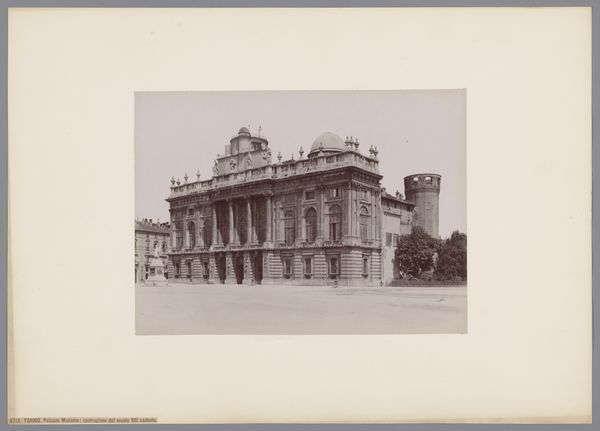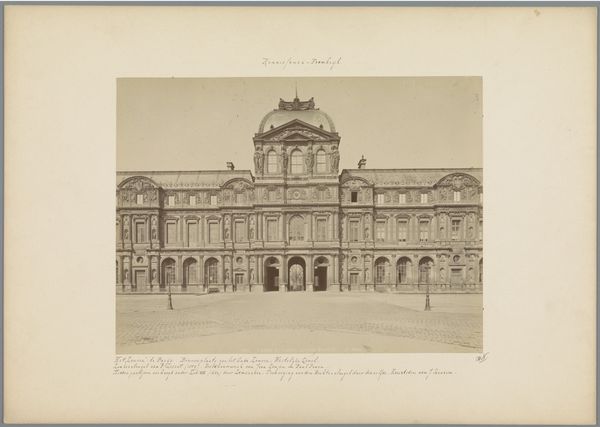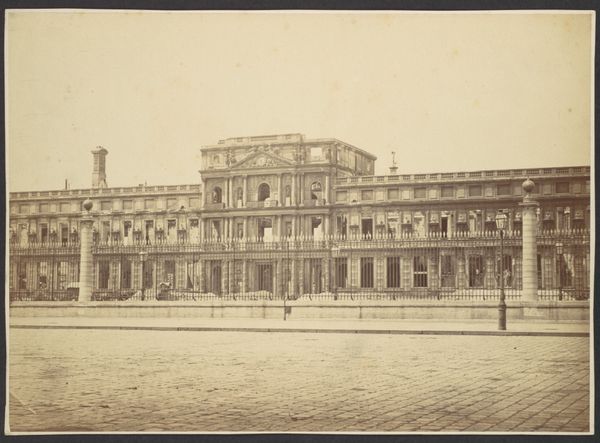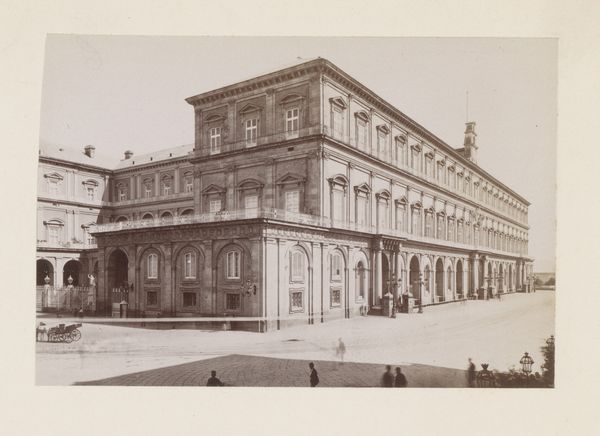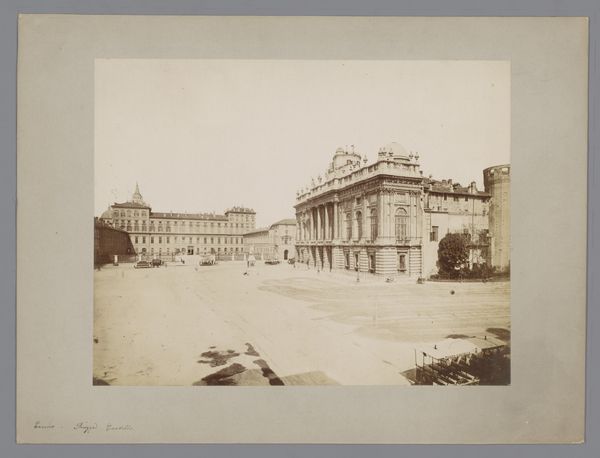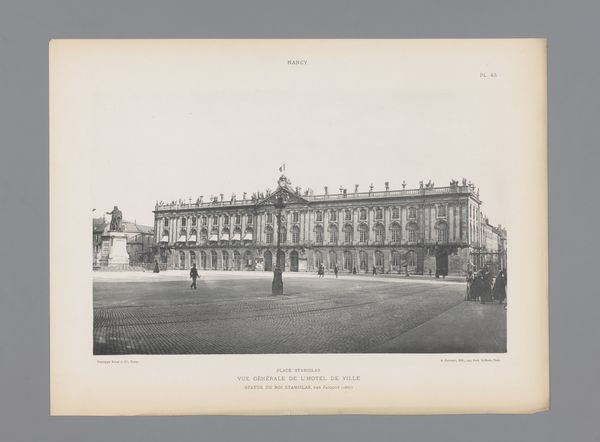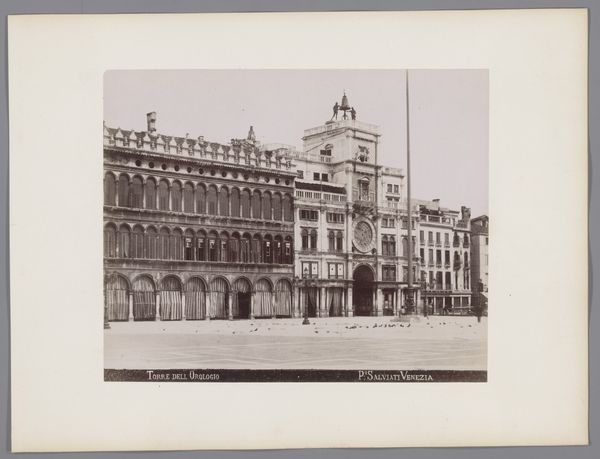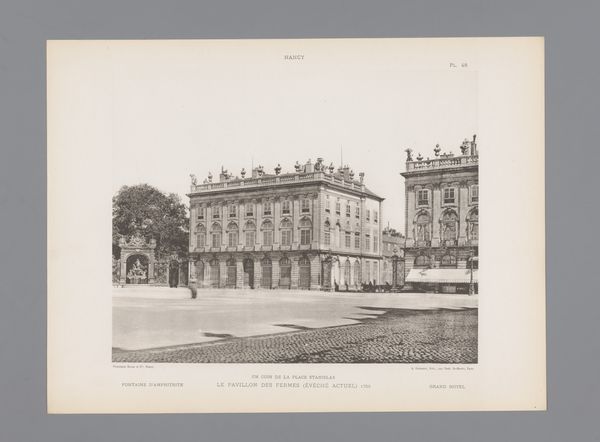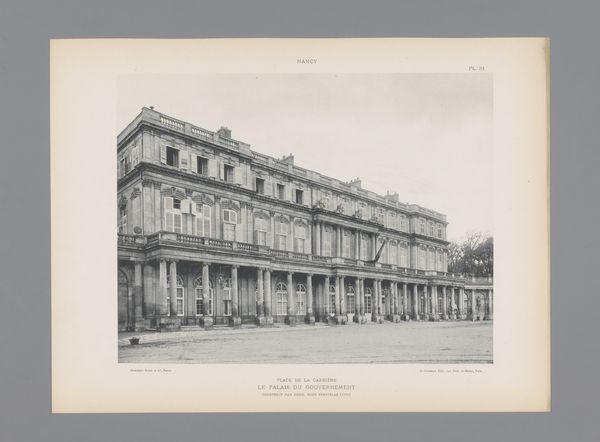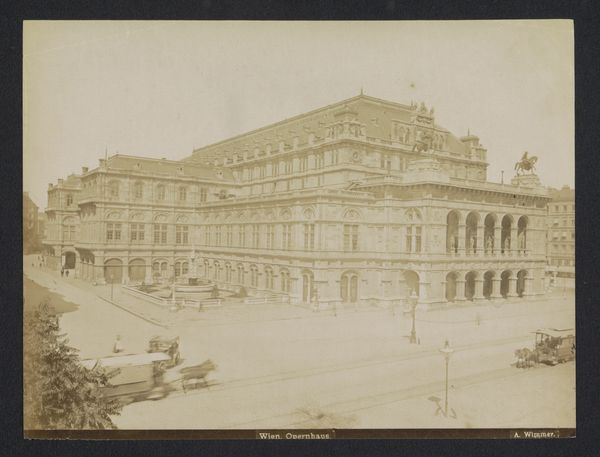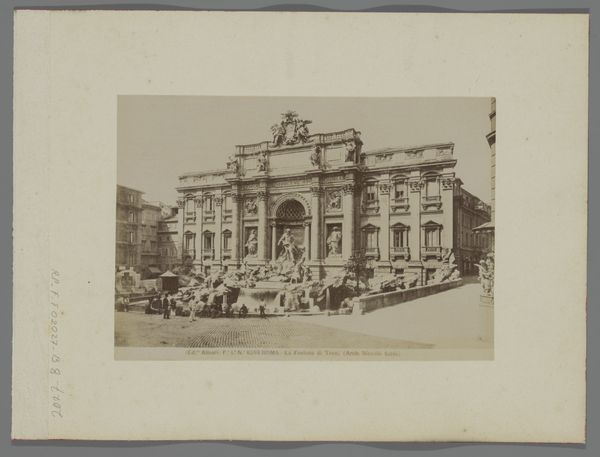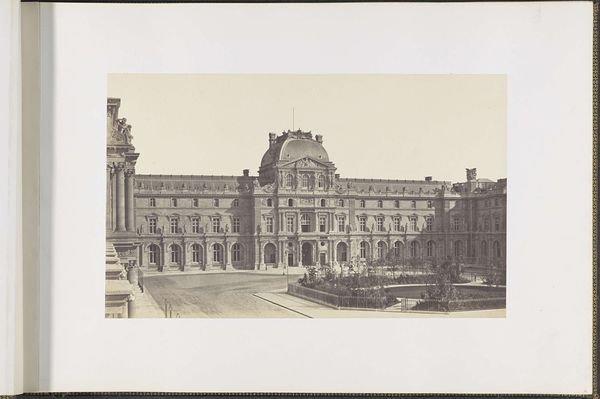
Gezicht op het Piazza Carlo Alberto en Palazzo Carignano te Turijn, Italië 1864 - 1881
0:00
0:00
Dimensions: height 317 mm, width 445 mm
Copyright: Rijks Museum: Open Domain
Curator: Standing before us is an albumen print by Giacomo Brogi, taken sometime between 1864 and 1881. It depicts the Piazza Carlo Alberto and Palazzo Carignano in Turin, Italy. Editor: It's austere, almost bleak, despite the architectural grandeur. The tonality, all grays and browns, suppresses any warmth. Look at the stark geometry of the piazza contrasting with the baroque facade. Curator: Brogi's photograph comes at an interesting point in Turin’s history. For a brief period leading up to 1864, Turin had been the capital of a recently unified Italy, thus a hub of political activity, with the Palazzo Carignano playing a key role. Photography at this moment was both documenting and contributing to the forging of a new national identity. Editor: I'm intrigued by how the architectural lines lead the eye. The arches create rhythm, but the composition is very static; there's a cold symmetry to the facade, with layers meticulously stacked one upon the other to achieve a somewhat ponderous look. Curator: Right. You're picking up on something significant about the era. Turin sought to assert itself as a modern European capital and its adoption of neo-classicism in buildings like this—though it incorporates Baroque elements—reflects its aspiration to project stability. The lack of bustle in Brogi's photo hints at an orchestrated calm. It reflects, I would say, the desires of a rising political class. Editor: Note how the play of light creates highlights and shadows; however, the texture almost completely washes away. It lacks a certain dynamism; the photographer seems solely interested in delineating the pure shape of the Palazzo. There are so few people, making the architectural space all the more dominant. Curator: And that's key: the absence becomes part of the message. Brogi’s work reminds us that these images weren't just documentation; they were participating in the very construction of an ideal. What stories are left untold when we consider the figures that might populate such a civic space? Editor: Perhaps a certain detachment allows one to fully admire the visual scheme as the picture of an abstract idea, which is very typical of the time when people felt deeply about capturing ‘beauty’. Ultimately, Brogi gave us a potent document by using such careful visual language.
Comments
No comments
Be the first to comment and join the conversation on the ultimate creative platform.
